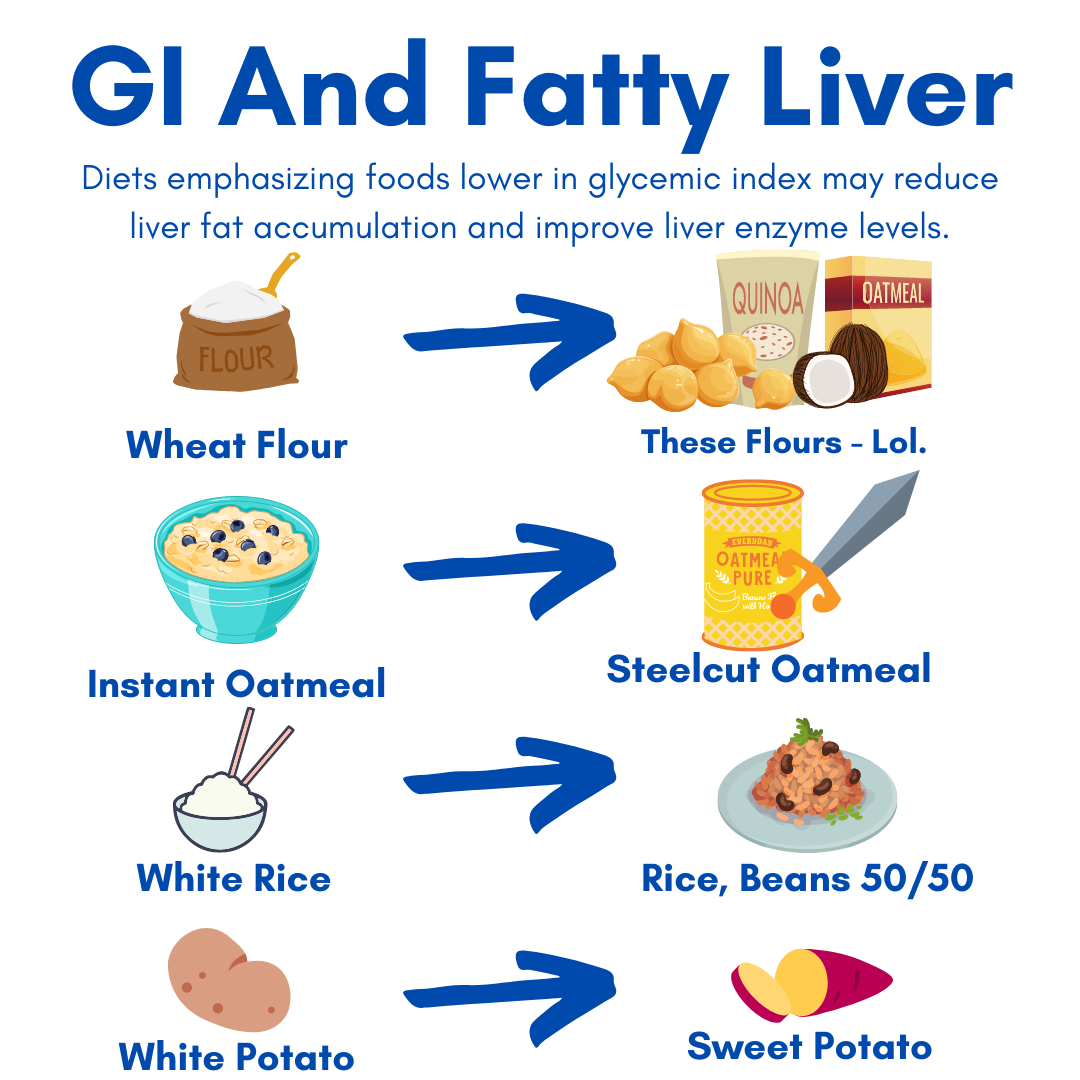We are now a few months removed from the launch of my latest book The Essential Diet For Fatty Liver Disease.
Those who have been following along the promotion cycle of the book will know that I released a great deal of supplementary blog content that supports and expands upon the concepts covered in the book for those who may be more scientifically inclined.
Today, by visiting the topics of glycemic index and insulin resistance, I’d like to finally close that loop.
Let’s start with a few basic definitions, which of course I’ve oversimplified for the sake of brevity.
Glycemic Index [GI] – A scale ranging from 1-100 that measures the extent to which a food raises blood sugar levels in the hours after consumption, with lower numbers being associated with less of an effect on blood sugar – which is generally a good thing. The GI of a food varies based on a number of variables not least of which how it is cooked and what other foods it may be combined with.
Insulin Resistance [IR] – A real buzz word in popular nutrition discourse, insulin resistance is essentially characterized by a compromised response of one’s cells ( muscle, fat, liver) to the hormone insulin – which is responsible for “opening” those cells so that they may take in and metabolize blood sugar. Depending on the state of one’s pancreas, insulin resistance may eventually lead to blood sugar level abnormalities and the conditions associated with that state including prediabetes, type 2 diabetes and metabolic syndrome.
Insulin also plays a major role in fat metabolism in a similar way, and insulin resistance is speculated to contribute to liver fat accumulation by causing the excess release and circulation of fatty acids into the blood stream where they may end up stored places they shouldn’t – like the liver.
In fact, insulin resistance is ” [A]n almost universal finding in nonalcoholic fatty liver disease (NAFLD).” according to The Journal of Clinical Endocrinology & Metabolism.
One’s best defense against insulin resistance in the context of NAFLD is surely to follow a more Mediterranean style diet, a topic which I’ve written on previously.
Nuts, seeds and legumes are significant unifying characteristics of a Mediterranean style of eating, and guess what they all have in common?
A very, very low glycemic index.
But grains/starches are also an important component of this style of eating, and their glycemic index can vary far more widely.
Let’s take it a step further.
Wheat, rice and oats are three of the four most consumed grains in the USA, while potatoes are the most consumed vegetable.
Using the graphic below, you can see how easy swaps can be made (all else equal) to reduce the glycemic nature of your diet.

Studies in this area suggest that doing so will pay dividends for those with fatty liver disease, suggesting a net reduction in dietary GI choices may lower both liver fat and liver enzyme levels.
Need help bringing this to life for your diet?
My new book can help.
Not much of a reader?
Reach out, and we can work one on one instead.
Andy De Santis RD MPH
Bonus Content
Saturated Fat may worsen insulin resistance in those living with NAFLD, learn more below.





